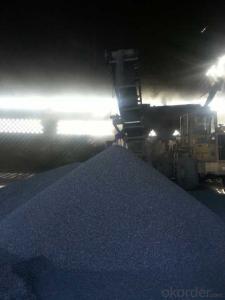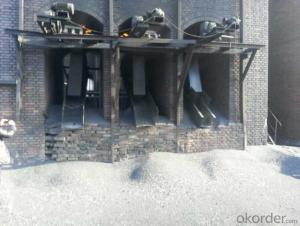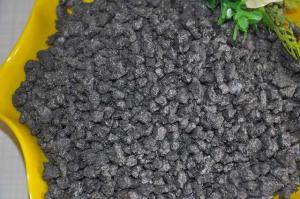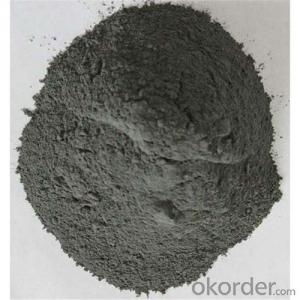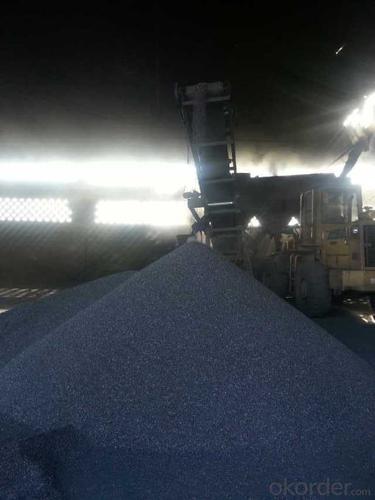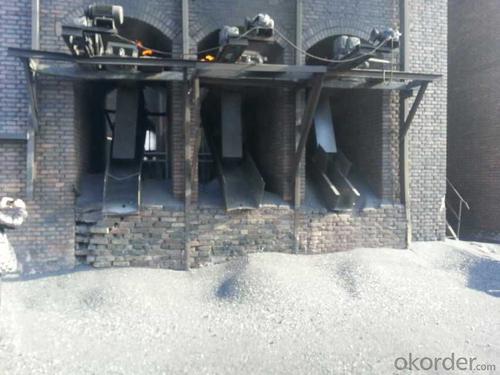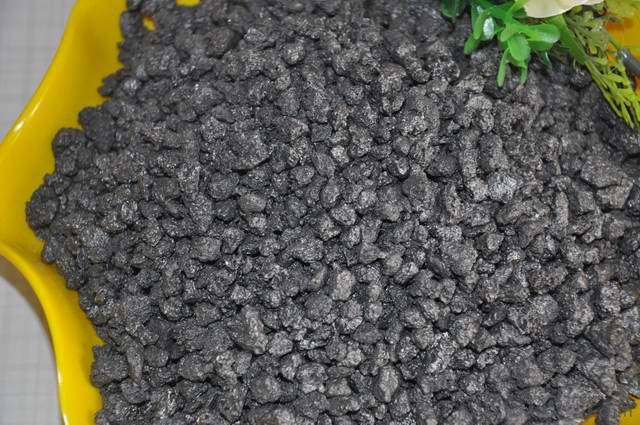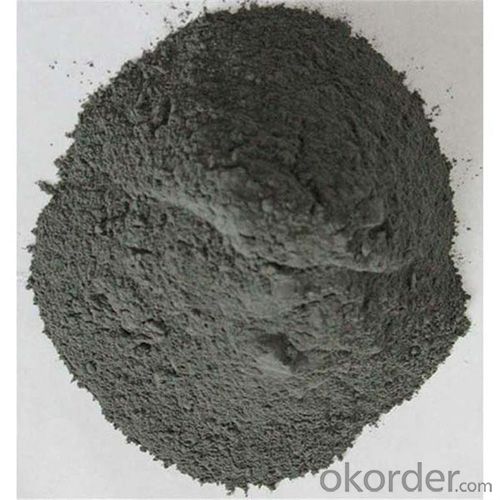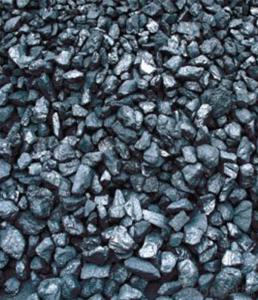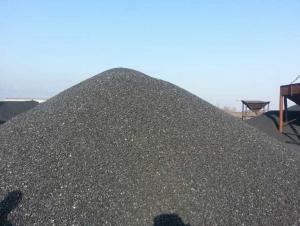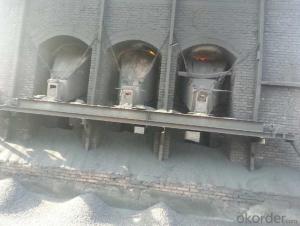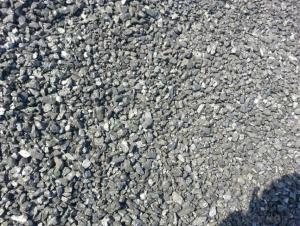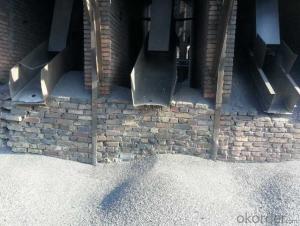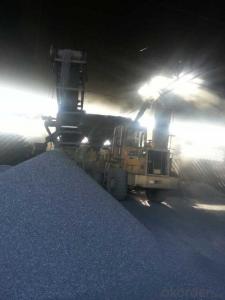Carbon Additive FC82-90 with Good and Stable Quality
- Loading Port:
- Tianjin
- Payment Terms:
- TT OR LC
- Min Order Qty:
- 20 m.t.
- Supply Capability:
- 5000 m.t./month
OKorder Service Pledge
OKorder Financial Service
You Might Also Like
Packaging & Delivery
Carbon Additive FC82-90 with Good and Stable Quality
25kgs/50kgs/1ton per bag or as buyer's request
Specifications
Carbon Additive FC82-90 with Good and Stable Quality
Calcined Anthracite
Fixed carbon: 90%-95%
S: 0.5% max
Size: 0-3. 3-5.3-15 or as request
Advantage and competitive of caclined anthracite:
Carbon Additive FC82-90 with Good and Stable Quality
1. strong supply capability
2. fast transportation
3. lower and reasonable price for your reference
4.low sulphur, low ash
5.fixed carbon:95% -90%
6..sulphur:lower than 0.3%
General Specification of Calcined Anthracite:
Carbon Additive FC82-90 with Good and Stable Quality
| FC | 90 | 88 | 85 | 83 | 82 |
| ASH | 8.5 | 10 | 12 | 14 | 15 |
| V.M. | 1.5 | 2 | 3 | 3 | 3 |
| S | 0.35 | 0.5 | 0.5 | 0.5 | 0.5 |
| MOISTURE | 0.5 | 1 | 1 | 1 | 1 |
Pictures
Carbon Additive FC82-90 with Good and Stable Quality
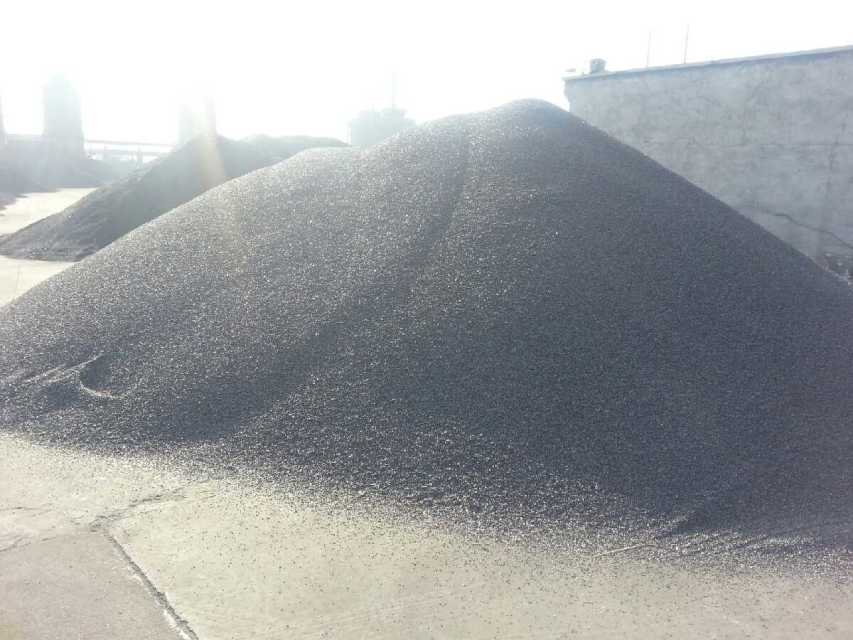
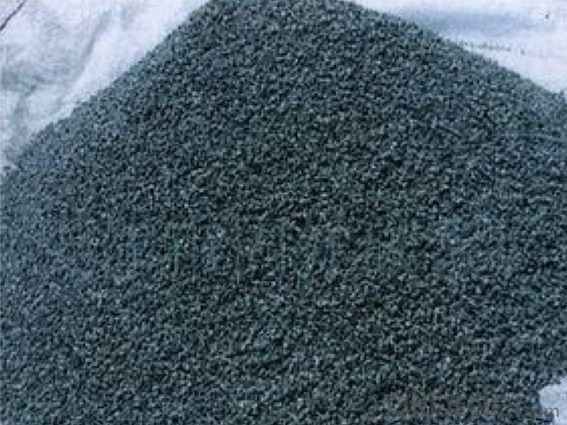
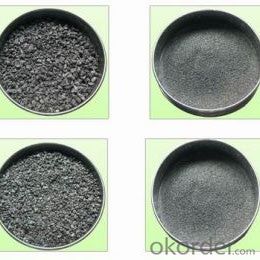
Carbon Additive FC82-90 with Good and Stable Quality
Advantage:
1.High quality and competitive price.
2.Timely delivery.
3.If any item you like. Please contact us.
Your sincere inquiries are typically answered within 24 hours.
- Q: How does carbon impact the availability of clean water resources?
- Carbon impacts the availability of clean water resources in several ways. Firstly, the burning of fossil fuels releases carbon dioxide (CO2) into the atmosphere, contributing to climate change. This leads to rising global temperatures, which in turn affect the water cycle. Increased evaporation rates and altered precipitation patterns can result in droughts or excessive rainfall, both of which can disrupt the availability and quality of clean water sources. Additionally, carbon emissions contribute to ocean acidification, which harms marine ecosystems and disrupts the delicate balance of marine biodiversity, ultimately affecting the quality and availability of freshwater resources.
- Q: How are carbon markets regulated?
- Carbon markets are regulated through a combination of international agreements, national legislation, and the oversight of regulatory bodies. These regulations aim to ensure the transparency, integrity, and effectiveness of carbon trading activities. They often include requirements for the accurate measurement and reporting of emissions, the establishment of reliable registries, the accreditation of market participants, and the enforcement of compliance mechanisms.
- Q: What are the consequences of increased carbon emissions on coral reefs?
- The consequences of increased carbon emissions on coral reefs are highly detrimental. Elevated carbon dioxide levels in the atmosphere lead to ocean acidification, which negatively impacts the ability of corals to build their calcium carbonate skeletons. This results in weakened and brittle coral structures, making them more susceptible to damage from storms and other environmental stressors. Additionally, higher temperatures caused by carbon emissions contribute to coral bleaching events, where corals expel the symbiotic algae that provide them with essential nutrients and vibrant colors. These combined effects of ocean acidification and warming ultimately lead to significant coral reef degradation, loss of biodiversity, and the decline of ecosystem services provided by these valuable marine habitats.
- Q: What are the consequences of increased carbon emissions on coastal regions?
- Increased carbon emissions have significant consequences on coastal regions. One of the most notable impacts is sea-level rise, caused by the warming of the planet and the subsequent melting of glaciers and ice sheets. This rise in sea levels can lead to coastal erosion, flooding, and the loss of coastal habitats. Additionally, carbon emissions contribute to ocean acidification, which harms marine life and coral reefs. The combination of these effects poses a threat to coastal communities, economies, and ecosystems, highlighting the urgent need for global action to reduce carbon emissions and mitigate the consequences.
- Q: How does carbon affect the formation of cyclones?
- Carbon dioxide (CO2) and other greenhouse gases, primarily emitted through human activities, contribute to the warming of the Earth's atmosphere. This increase in temperature impacts the formation and intensity of cyclones. Warmer sea surface temperatures provide more heat and moisture, fueling the development and strengthening of cyclones. Additionally, higher levels of carbon dioxide may lead to changes in atmospheric circulation patterns, potentially affecting the location and frequency of cyclone formation.
- Q: What are the different types of carbon-based drugs?
- Carbon-based drugs can be classified into several categories based on their chemical structure and mode of action. One of the most common types is the class of drugs known as alkaloids. Alkaloids are naturally occurring compounds found in various plants and have potent pharmacological effects. Examples of carbon-based alkaloid drugs include morphine, codeine, and cocaine. Another category of carbon-based drugs is steroids. Steroids are a class of compounds characterized by a carbon skeleton consisting of four fused rings. They are widely used in medicine due to their anti-inflammatory and immunosuppressive properties. Examples of carbon-based steroid drugs include cortisone, prednisone, and estrogen. Furthermore, carbon-based drugs can also be classified as nonsteroidal anti-inflammatory drugs (NSAIDs). These drugs work by inhibiting the action of cyclooxygenase enzymes, thereby reducing pain, inflammation, and fever. Common carbon-based NSAIDs include aspirin, ibuprofen, and naproxen. Additionally, carbon-based drugs can be categorized as antibiotics. Antibiotics are compounds derived from microorganisms or synthesized artificially that inhibit the growth of bacteria or other microorganisms. Examples of carbon-based antibiotic drugs include penicillin, tetracycline, and erythromycin. Lastly, carbon-based drugs can also be synthetic compounds designed to target specific receptors or pathways in the body. These drugs are often developed through extensive research and testing to treat various diseases and conditions. Examples include cholesterol-lowering statins, antipsychotic medications, and anti-cancer drugs. In summary, the different types of carbon-based drugs include alkaloids, steroids, NSAIDs, antibiotics, and synthetic compounds. Each category encompasses drugs with diverse chemical structures and mechanisms of action, allowing for a wide range of therapeutic applications in medicine.
- Q: What are the benefits of carbon-neutral technologies?
- Carbon-neutral technologies have numerous benefits, including the reduction of greenhouse gas emissions, mitigating climate change, and improving air quality. They also promote energy efficiency, stimulate innovation and job creation in the clean energy sector, and enhance energy security by reducing reliance on fossil fuels. Furthermore, carbon-neutral technologies contribute to sustainable development, foster international cooperation, and create a healthier and more sustainable future for all.
- Q: Carbon content of fly ash and fly ash roasted vector what is the relationship?
- The amount of burning loss of fly ash is the index that indicates the unburned organic matter in coal ash, including the number of carbon particles. The greater the burn loss, the more carbon is burnt. The presence of unburned carbon has a great negative impact on the quality of fly ash.
- Q: How does carbon affect the formation of ground-level ozone?
- Carbon is a key contributor to the formation of ground-level ozone, also known as smog. When carbon-containing pollutants, such as vehicle exhaust and industrial emissions, are released into the atmosphere, they react with sunlight and other pollutants to form ground-level ozone. This reaction occurs more rapidly in the presence of high levels of carbon, leading to increased ozone concentrations.
- Q: How does carbon impact the quality of freshwater systems?
- Freshwater systems can be significantly affected by carbon, with one of the main ways being through the emission of carbon dioxide (CO2). Excess CO2 released into the atmosphere can dissolve in rainwater and form carbonic acid, leading to the acidification of freshwater bodies and a decrease in pH levels, making the water more acidic. The high levels of acidity can have negative consequences for various freshwater organisms, including fish, amphibians, and invertebrates. It can disrupt their reproductive systems, hinder their growth and development, and even result in their death. Additionally, increased acidity can also impact the availability of essential nutrients in the water, further affecting the health and survival of aquatic life. Another impact of carbon on freshwater systems is through the process of eutrophication. Excessive carbon can enter freshwater bodies through runoff from agricultural fields or wastewater treatment plants. This surplus of carbon acts as a nutrient, fueling the growth of algae and other aquatic plants. As these plants multiply, they can form dense mats on the water's surface, blocking sunlight and depleting oxygen levels. The depletion of oxygen can lead to hypoxia, a condition characterized by dangerously low oxygen levels that can result in the death of fish and other organisms. Additionally, the excessive growth of algae can cause algal blooms, which can release toxins into the water, further compromising the quality of freshwater systems. Furthermore, carbon also plays a role in influencing the temperature of freshwater systems. Increased levels of carbon dioxide in the atmosphere contribute to global warming, which raises the overall temperature of the planet. Consequently, freshwater systems may experience higher water temperatures, leading to ecosystem changes. Some species may struggle to adapt to these warmer conditions, while invasive species, for example, may thrive. In conclusion, carbon exerts a significant influence on the quality of freshwater systems. It can result in acidification, eutrophication, and temperature changes, all of which have adverse effects on the health and survival of aquatic organisms. To safeguard the integrity and long-term sustainability of freshwater systems, it is essential to address carbon emissions and reduce our carbon footprint.
Send your message to us
Carbon Additive FC82-90 with Good and Stable Quality
- Loading Port:
- Tianjin
- Payment Terms:
- TT OR LC
- Min Order Qty:
- 20 m.t.
- Supply Capability:
- 5000 m.t./month
OKorder Service Pledge
OKorder Financial Service
Similar products
Hot products
Hot Searches
